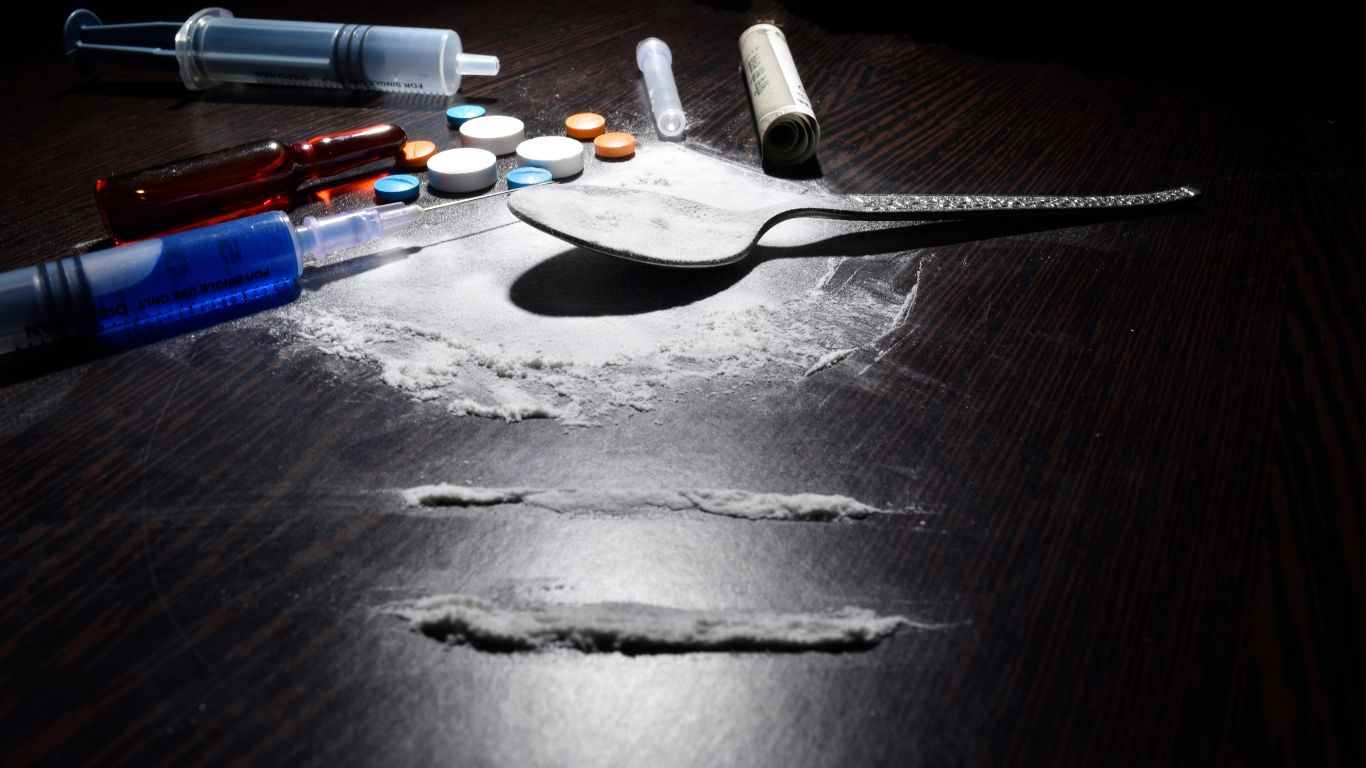What is Rainbow Fentanyl?
Rainbow fentanyl has been in the news and in public health warnings lately, with the Centers for Disease Control (the CDC) and the Drug Enforcement Administration (DEA) issuing information and health statements and plenty of news agencies picking it up as a story. It is a potent and dangerous opioid drug called fentanyl that is found in a variety of bright colors, made in labs and distributed by Mexican drug cartels and street drug dealers. As Halloween nears, the fear of some parents is that their children may mistake these drugs for candy, but the idea that these drugs are produced in bright colors to attract young people may not be true.
The Myths About Rainbow Fentanyl
When talking about a dangerous and potent drug, especially through online forums, information can become confused or exaggerated, becoming a game of telephone and creating myths that are simply not true. Some common myths about rainbow fentanyl include:
- You can overdose on fentanyl just by touching it. This drug will not kill you if it touches your skin. In fact, you will likely not be affected at all, but you should wash the area with soap and water, avoiding touching your face and eating until you have washed the area properly. Monitor yourself for signs of intoxication like disorientation, dizziness, drowsiness, nausea, slowed breathing, and pinpoint pupils. Using bleach, hand sanitizer, or alcohol-based liquids is not a good idea because it can increase the level of skin absorption and will not remove all the fentanyl from your skin.
- The colors of rainbow fentanyl are to tempt children to take them. Drug dealing is a money-making endeavor and giving deadly pills to children is not profitable, to be blunt. It is more likely that the bright colors and odd shapes are there to make them look less like drugs during smuggling and sales, and the colors are also used to mimic prescription drugs. Some dealers may also use colors to identify theirs from others.
- Fentanyl overdose is easily treated using Narcan. Unfortunately, a fentanyl overdose is not something everybody recovers from. Opioid drugs in general can cause dangerously low breathing, resulting in brain damage, coma, and death if not treated by medical professionals. Unlike other prescription painkillers or heroin, a single dose of Narcan will often not be enough to revive a person overdosing on fentanyl. It may take multiple doses, and once they wear off because fentanyl is so potent, it can take over the body once again. Many people who overdose on fentanyl require ICU levels of care to ensure they continue breathing.
- Rainbow fentanyl is the biggest threat to young Americans. Rainbow fentanyl has made the news but is only one of many different forms of deadly drugs being purchased online, through social media, and on the streets. The real issue is when a person purchases other drugs like cocaine, Percocet, or Xanax from a drug dealer. Counterfeit pills and powders are laced with fentanyl, sometimes in deadly doses, with the buyer unaware of what they are taking.
The Facts About Rainbow Fentanyl
Fentanyl is a serious and dangerous drug that is 50 times as potent as heroin and 100 times stronger than morphine, making it extremely addictive and unsafe to use. Other facts related to fentanyl include:
- Deaths due to fentanyl overdoses are on the rise. One pill, or a tiny amount of powder (equivalent to 10-15 grains of salt), is enough to kill you, and there are 150 opioid overdose deaths every day in the USA
- You cannot see, taste, or smell fentanyl
- Fentanyl test strips cannot always detect fentanyl analog drugs like carfentanyl, so you are never 100% safe from overdosing when it comes to street drugs
- There is no evidence that the colors of rainbow fentanyl correspond to their potency
- It is not possible for a street drug manufacturer to make a “safe” pill
- Fentanyl comes in many forms including pills, powder, nasal spray, liquid drops on blotter paper, and blocks in bright colors that resemble sidewalk chalk
- Fentanyl addiction often requires long-term rehabilitation, medication-assisted treatments, and therapy to overcome
How To Protect Yourself from Rainbow Fentanyl
To protect yourself from the dangers associated with rainbow fentanyl, you need to be realistic and cautious when it comes to drugs. Know that there is no way for you or your drug dealer to tell whether a dose is safe, and you can also come into contact with a deadly amount of fentanyl in other pills, powders, and liquids. It can come in any color, and any shape, and it can easily be stamped with any logo to look like prescription pills. There is no quality control when it comes to drugs manufactured in illegal laboratories, and traffickers will mix fentanyl into their supplies to be able to make a higher profit.
The easiest way to ensure you are not affected by rainbow fentanyl is to stop using drugs, especially prescription opioids and other pressed pills and powders purchased from drug dealers. Remember that your life is not something to gamble with, and the chances of overdose death are too high to take the risk of studying a bit longer or partying a bit harder.
Find Effective Fentanyl Addiction Treatment at TruPath
TruPath is a network of addiction treatment centers that provide comprehensive care for people with opioid addictions, including fentanyl addictions. We offer all levels of care, from safe and effective medical detox programs and medication-assisted treatment (MAT) programs with long-term drug tapers to inpatient rehab and outpatient treatment programs including partial care programs, intensive outpatient programs, and long-term aftercare treatments, groups, and meetings.
Stopping fentanyl use is not easy, but with our medical detox programs you will have doctor’s care, prescription medications, counseling, therapy, evidence-based treatments, behavioral health care, mental health care, and holistic treatments that will help you avoid acute withdrawal symptoms like:
- Insomnia
- Agitation and anxiety
- Irritability
- Low energy
- Runny nose and teary eyes
- Cold sweats, chills, and goosebumps
- Chronic yawning
- Muscle aches
- Nausea and vomiting
- Abdominal cramping
- Restless leg syndrome
- Depression
- General flu-like symptoms
People who have been using strong opioids like fentanyl may experience post-acute withdrawal, with symptoms like body aches, nausea, and severe drug cravings that can last for weeks or even months after detoxing. Because opioid detox can be challenging, it is often recommended to spend 30-90 days in inpatient rehab, followed by a long-term outpatient program with aftercare and medication-assisted treatment.
There are several options for rehabilitation programs that can be customized to best suit your needs as you heal your body, mind, and spirit, and reintegrate back into your life, overcoming substance abuse one step at a time. Some of the programs and treatments we offer at TruPath include:
- Dual-diagnosis treatments for mental health issues or other co-occurring disorders
- Cognitive behavioral therapy and dialectical behavior therapy
- Anger management
- Individual therapy
- Family therapy
- Group therapy
- Motivational enhancement therapy
- Holistic therapies
- Experiential therapy
- Psychodynamic therapy
- Art therapy
- Biofeedback
- 12-step integration
- Relapse prevention programs
- Case management services
Please contact our team today for help with a fentanyl use disorder, or if you have any questions about our facilities, payments, insurance, inpatient, or outpatient rehab, and detox. We are happy to speak to you and help you understand your options. You are not alone in this, and we can help.

